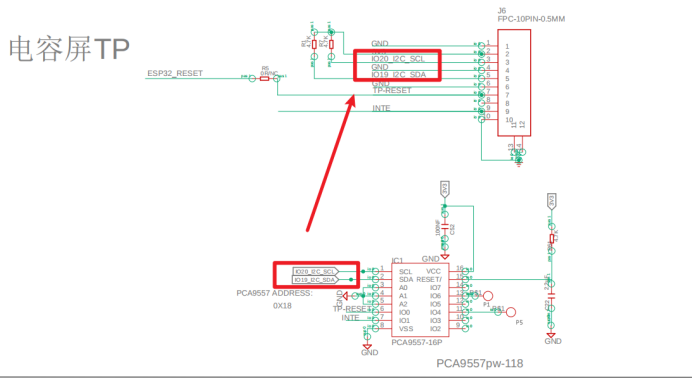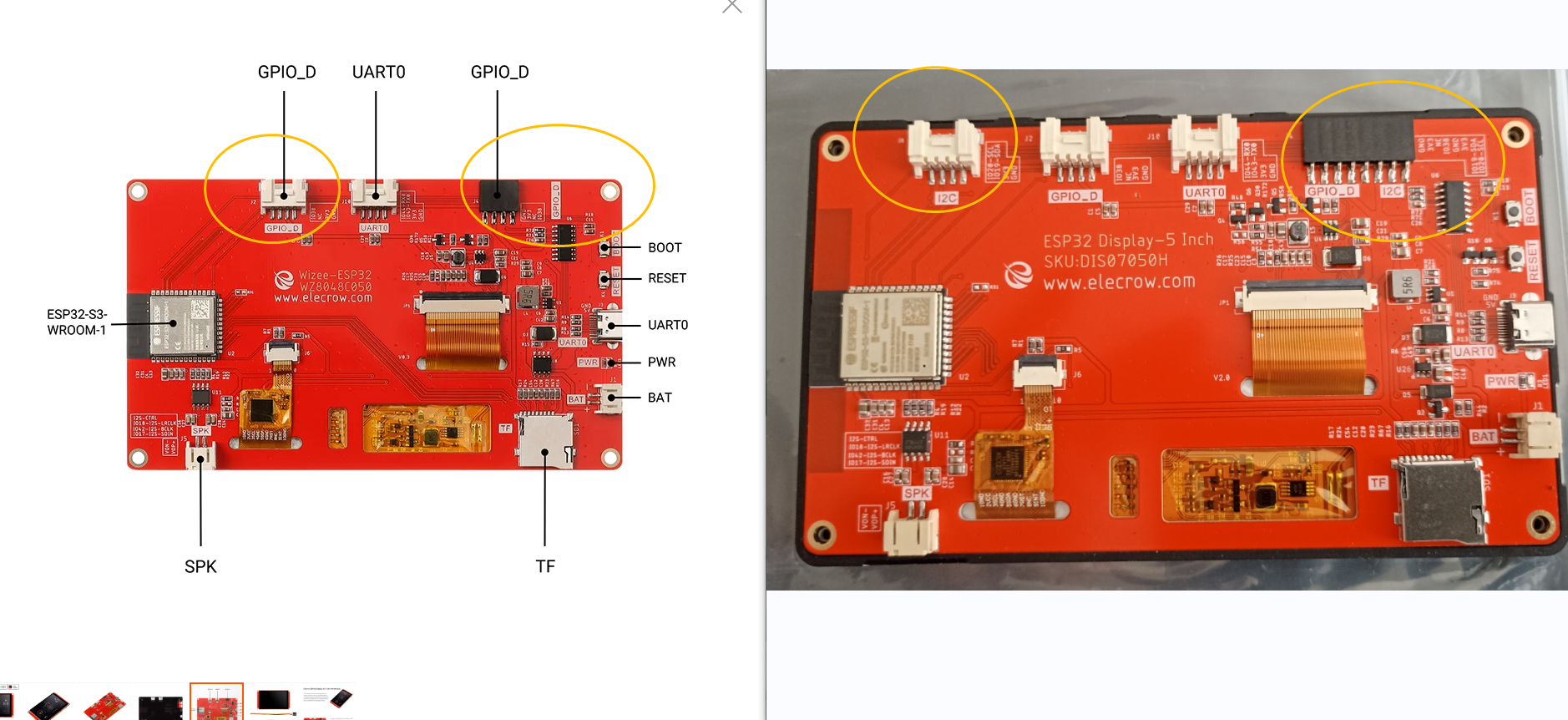ESP32 Display Update History
Here we record the changes to the esp32 displays
📕Sept 2024
The latest version of the 3.5-inch screen is version 2.2. The touch drive IC is different.
Version 2.0
TFT_MISO is pin 12;
Touch_CS is pin 33.
Version 2.2:
TFT_MISO is pin 33;
Touch_CS is pin 12.
Therefore, the corresponding pin numbers need to be modified in the code, and the TFT_eSPI library also needs to be modified accordingly.
📕June 2024
The latest version of the 5-inch and 7-inch screens is version 3.0, which adds the chip PCA9557 to increase timing control. Therefore, you need to add the PCA9557 library to make the touch work properly.
Video: https://www.youtube.com/watch?v=E3NAmstft_8&list=PLwh4PlcPx2GcKJ17Z_xcAxQoh-Tmms_X1&index=3
①Add the PCA9557 library:
#include <PCA9557.h>
②Define the PCA9557 object:
PCA9557 Out;
③Control with RESET and EN to meet the timing requirements:
Wire.begin(19, 20); Out.reset(); Out.setMode(IO_OUTPUT); //Set to output mode Out.setState(IO0, IO_LOW); Out.setState(IO1, IO_LOW); delay(20); Out.setState(IO0, IO_HIGH); delay(100); Out.setMode(IO1, IO_INPUT);
📕March 2024
Because "SmartView" has been registered by others, we now officially name the HMI series CrowPanel
📙February 2024
1.Product Name change to SmartView Display
2.Hardware changes:
- Silkscreen: 1. From "Wizee ESP32" to "ESP32 Display-xinch"; 2.From "WZxxx" to "DISxxx"
- All sizes of screens have added battery charging circuits. Connect the battery to the BAT interface and you can charge the battery through the USB-C interface.
- There is no need to manually press the boot button to enter the burning mode for all screen sizes. After you click download in the compiler, the board will automatically enter the burn-in mode.
- After the program download is completed, the program can be automatically run.
- For 3.5-inch display, the chip is changed from ESP32-WROOM-32-N4 to ESP32-WROVER-B, PSRAM is changes to 8MB
- For 5.0, 7.0-inch display, there's I2C port added




Comments
To use the latest screen versions, ensure you update the pin configurations in your code and modify the TFT_eSPI library for the 3.5-inch screen. For the 5-inch/7-inch (v3.0), add the PCA9557 library for proper functionality.
For the 3.5-inch display, what is the best way to determine if I have version 2.0 or 2.2 without disassembling it?
Dear Lyant,
Hope you are doing well. Thank you for the support to us.
We've received your messages. Our technical support team is currently looking into the issue in your messages. Please be patient, and we will get back to you as soon as possible.
Sorry for the inconvenience caused.
Thanks!
Warm regards,
Dear Lyant,
May I ask which product are you using ? is it the product in the link 1 or link 2?
link 1 :
https://www.elecrow.com/esp32-display-3-5-inch-hmi-display-spi-tft-lcd-touch-screen.html
**
link 2:
**https://www.elecrow.com/crowpanel-advance-3-5-hmi-esp32-ai-display-480x320-artificial-intelligent-ips-touch-screen.html
Thanks!
Warm regards,